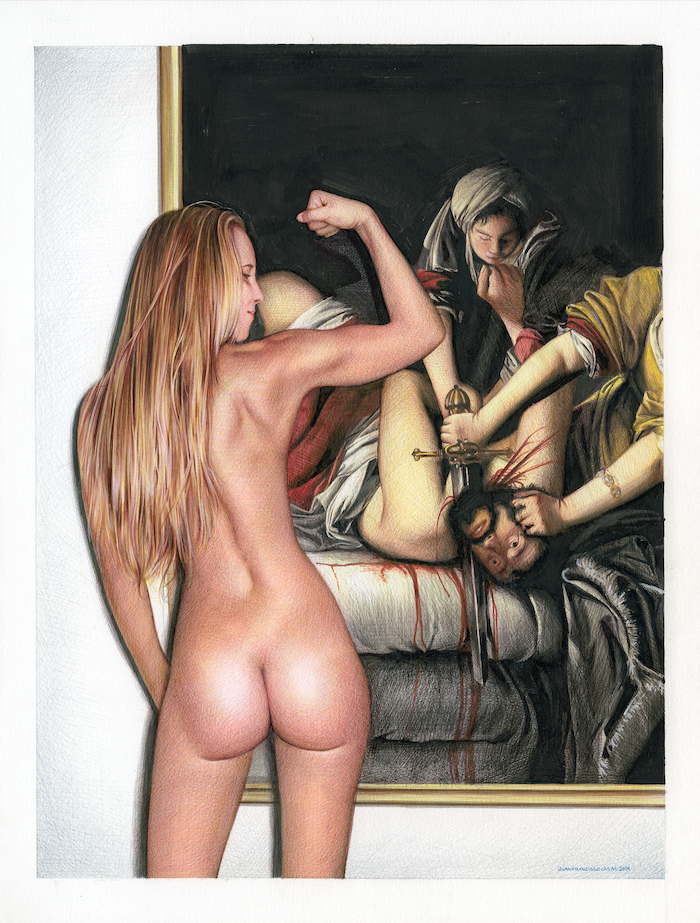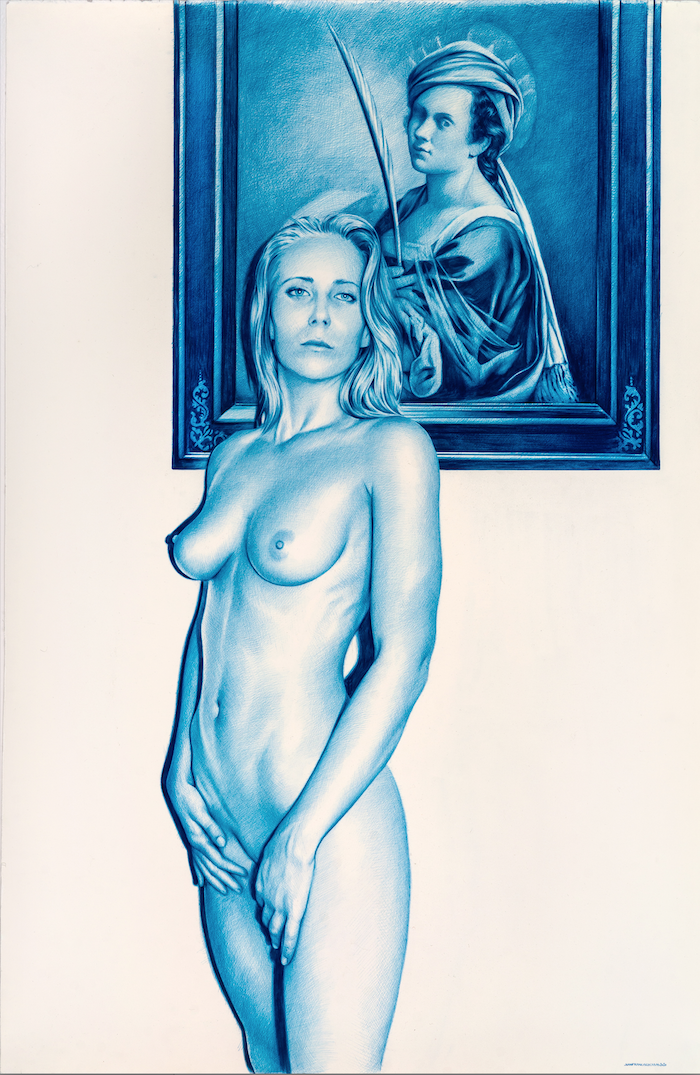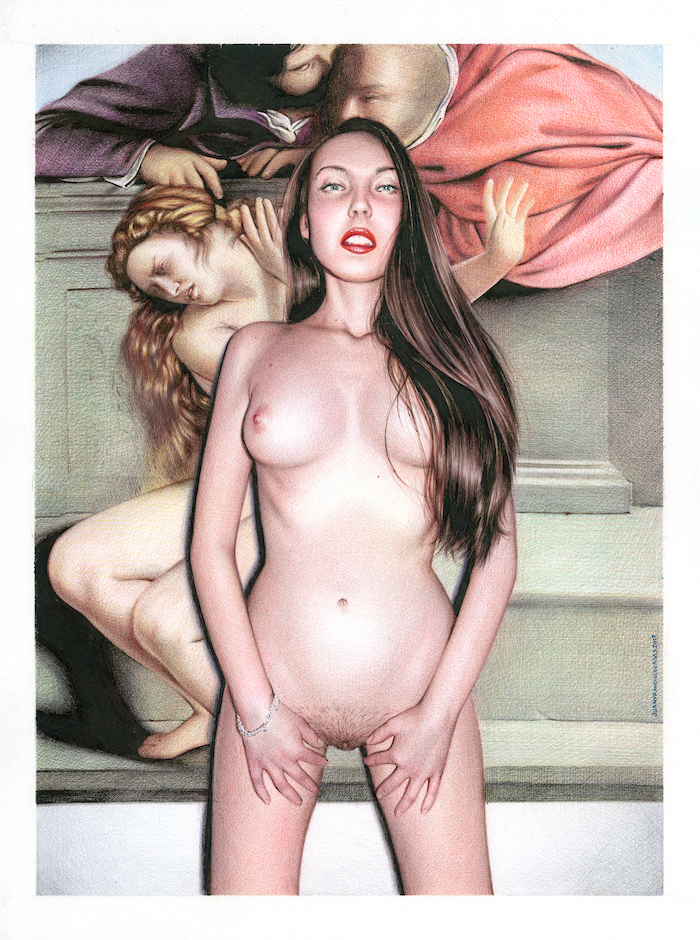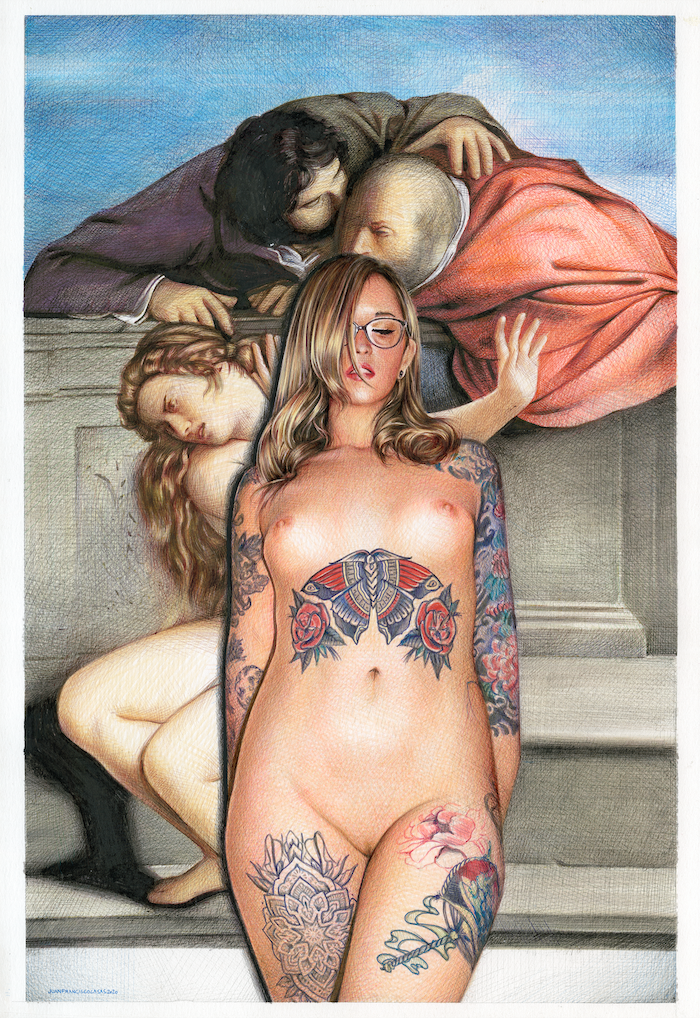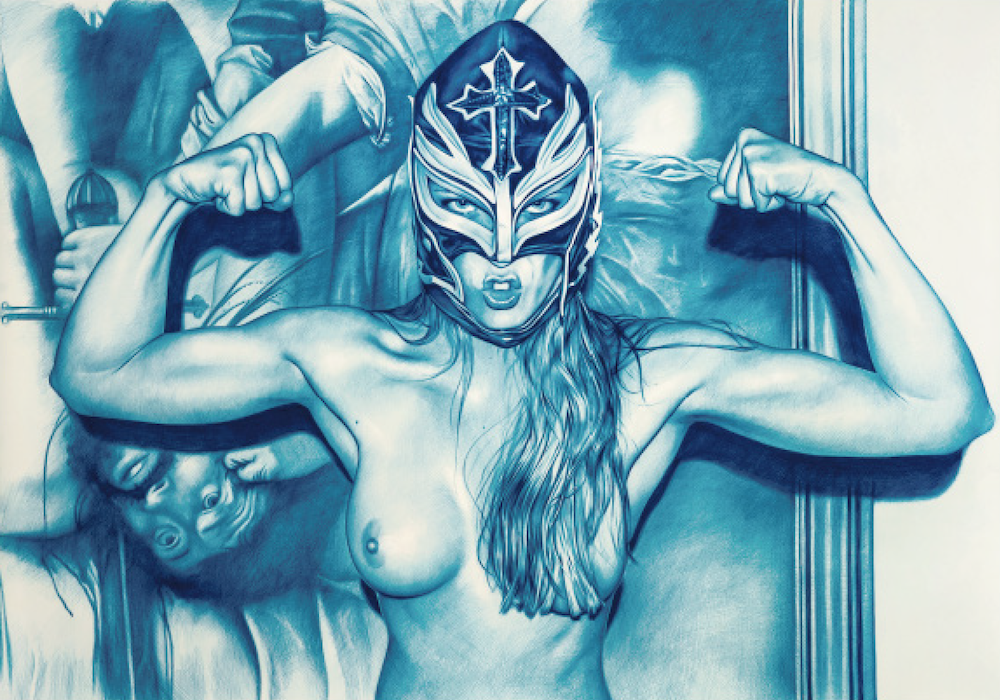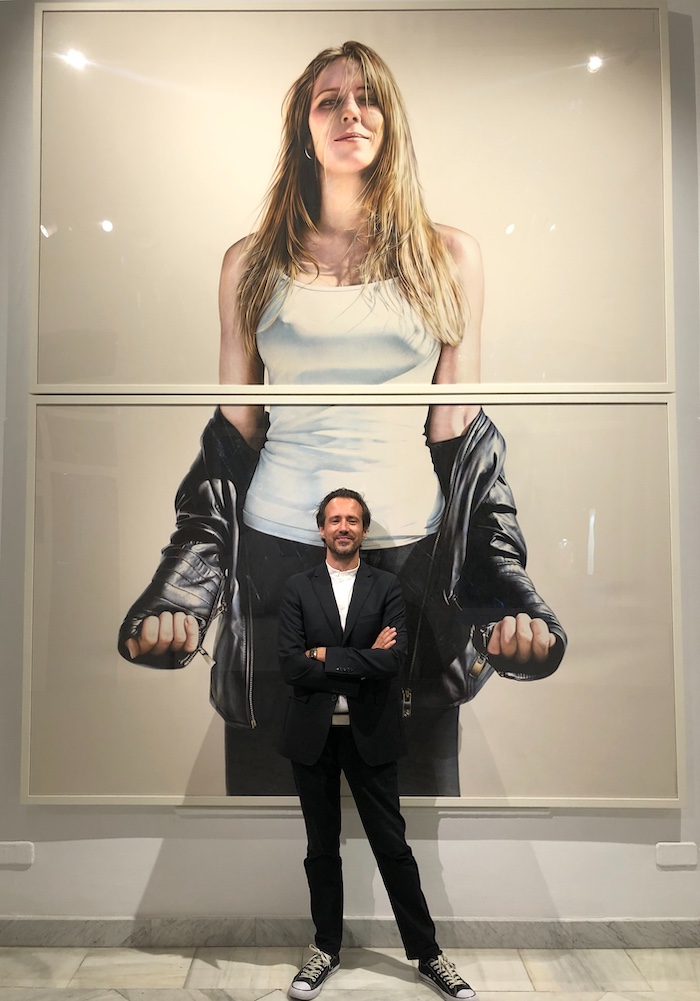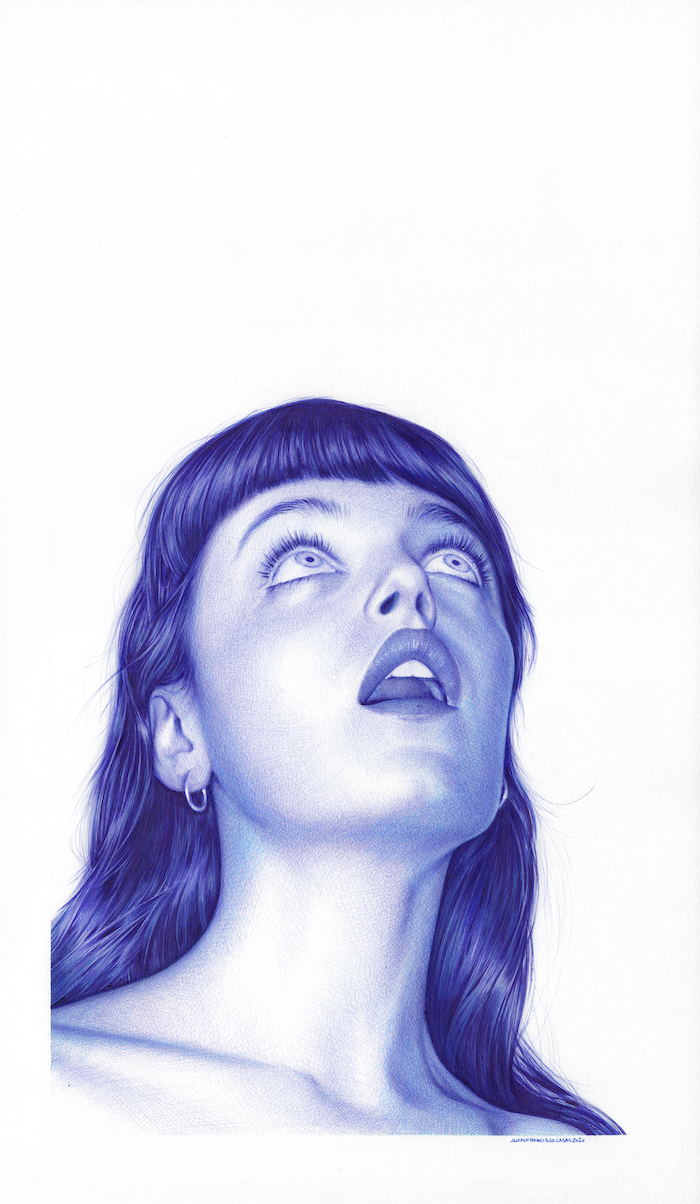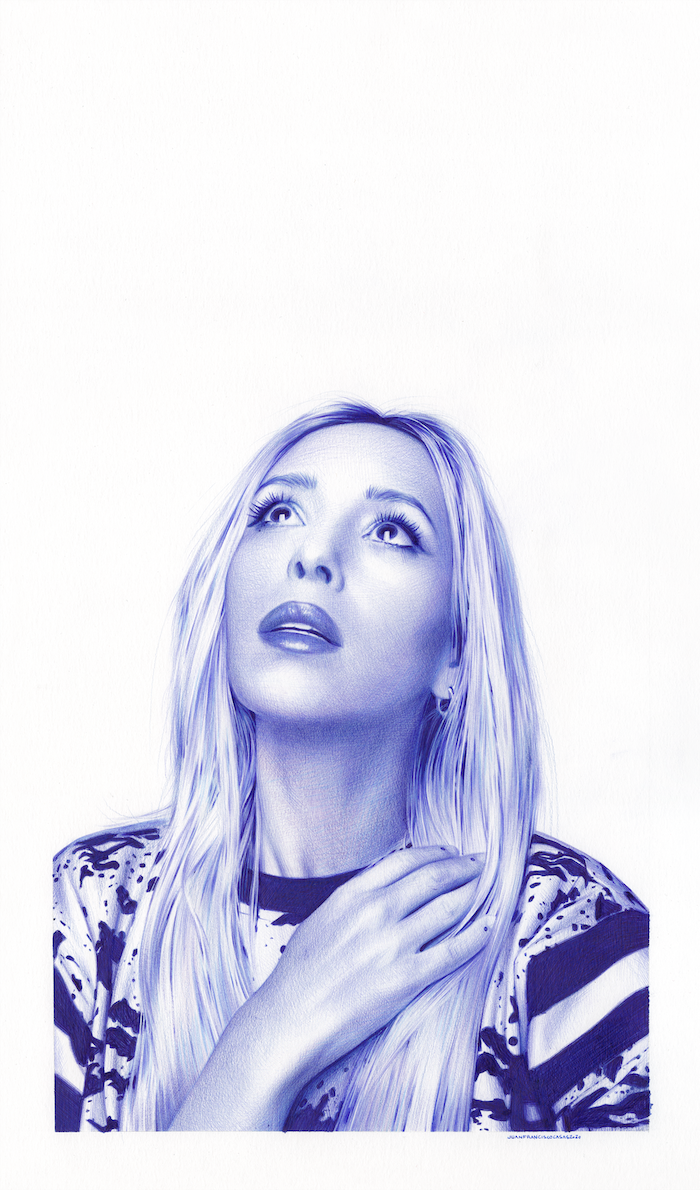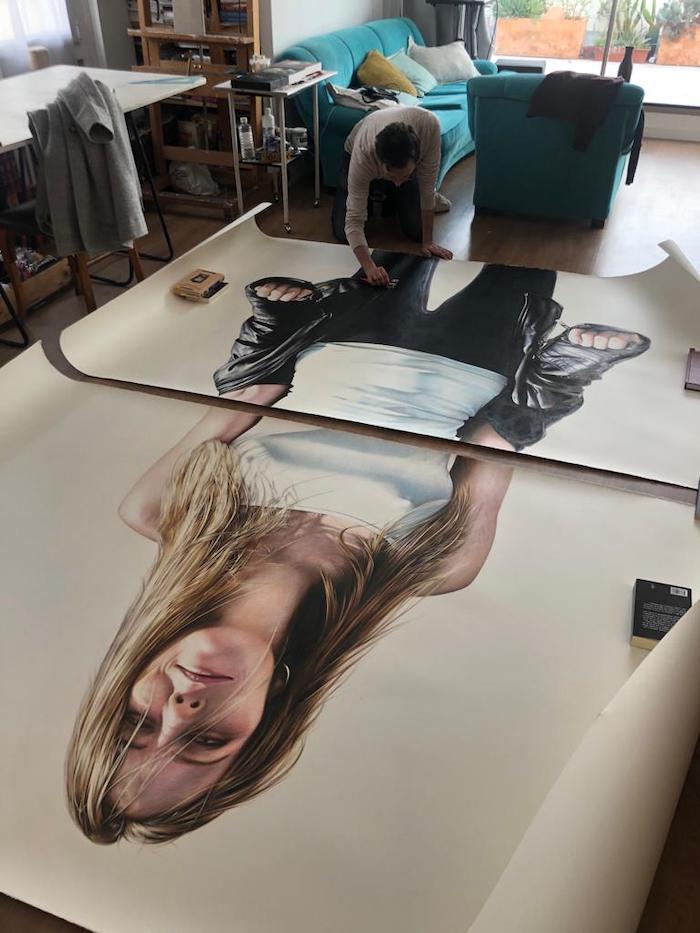“It is an exhibition that goes from the biographical to the autobiographical, about that specular and reciprocal game always present in my work and also in the works of Artemisia Gentileschi and Anna Banti," Juan Francisco Casas says of his newest showcase in Madrid. It's been awhile since we spoke to the artist, who was featured in our Juxtapoz Hyperreal book years ago. The new show has 45 pieces, all formats paper works (including the biggest drawing he has ever done, a full color ballpen portrait), oil paintings and three sculptures, one of them, blue ballpen on Carrara marble, a technique never done before.
"In these works I speak of how art transforms life, and vice versa, of life itself reflecting in art," he says. "Thus, all works reflect in different ways on the duality of the voice, on the authorship of works that form part of a life, about the past and the present, and about the feminine in their different realities, representations and perspectives ... In this way, all the women represented in the exhibition are professionals of the art: artists, gallerists, collectors, art historians, writers, art critics, architects, actresses ... women who are represented as they have decided, without hiding themselves, without censorship.”
Galeria Fernando Pradilla presents Juan Francisco Casas’ seventh solo exhibition in the gallery, twentieth solo show of his career, titled Non Piangere. It is a show inspired by the Baroque painter Artemisia Gentileschi in which the iconic works of this artist serve as a pretext for Casas to develop his characteristic iconography around the female body and its nature. The body as a place for political and social reflection confronts the viewer with their own thinking. How do we see ourselves? How do we see each other? What ideas do we have about ourselves as an individual and as a social body? Casas very aptly refers to Clarice Lispector’s ‘The Greatest experience’ in which the Brazilian author writes “I should have liked to be other people first in order to know what I was not. Then I realized I had already been those others and found it easy. My greatest experience would be to be the other of the others: and the other of the others was me.”






